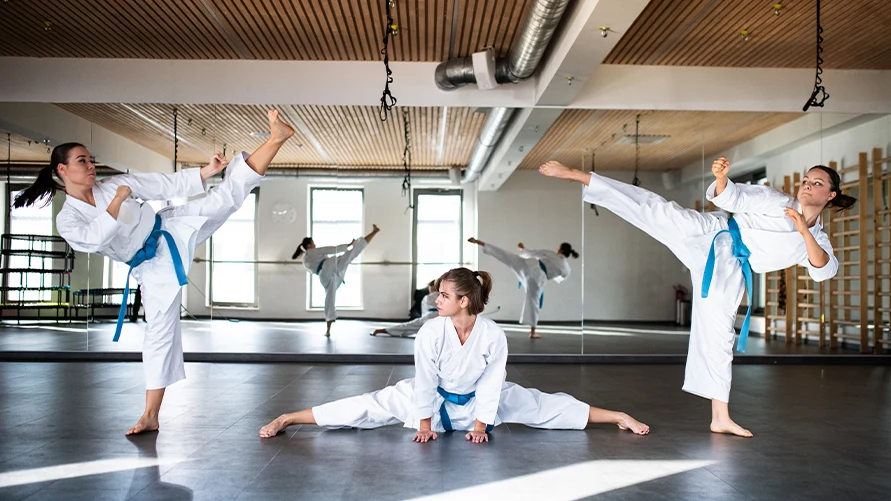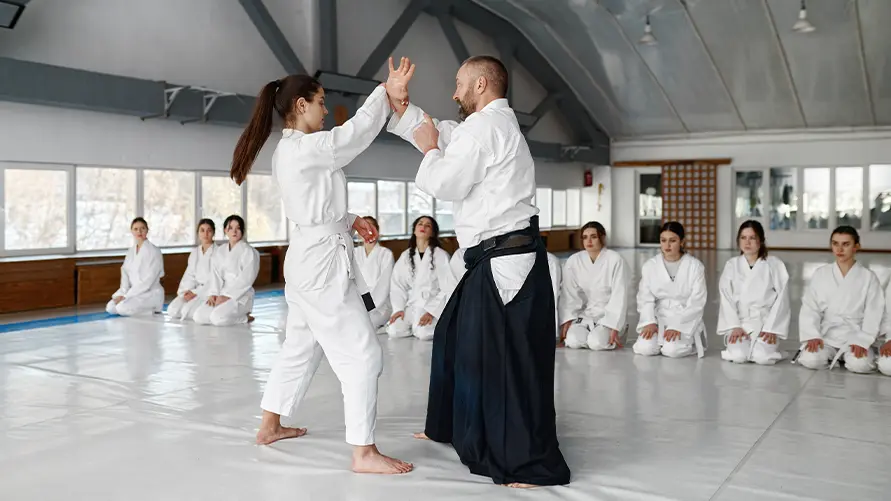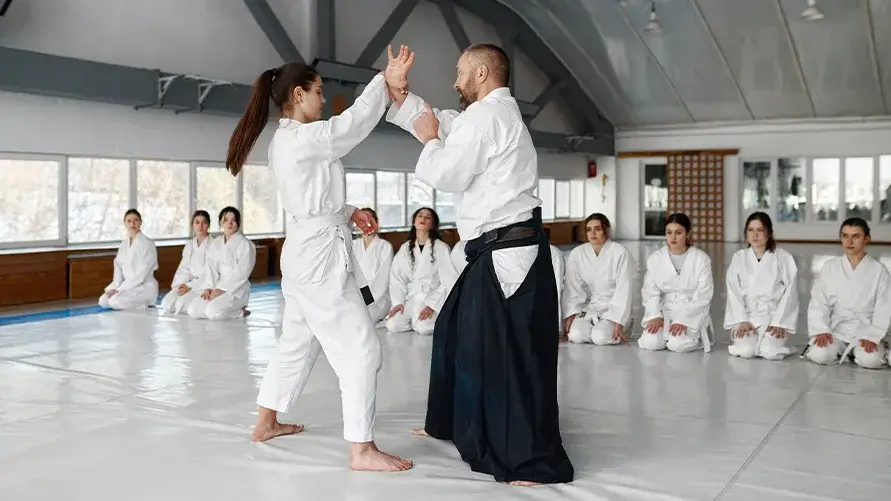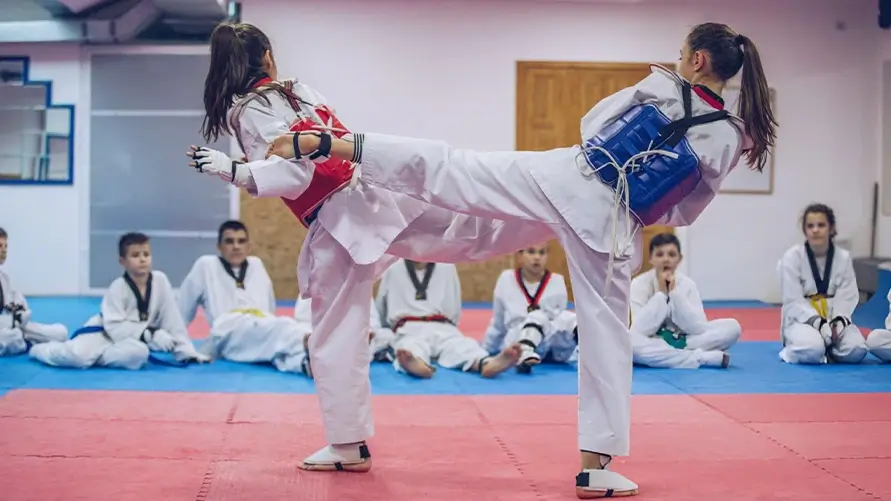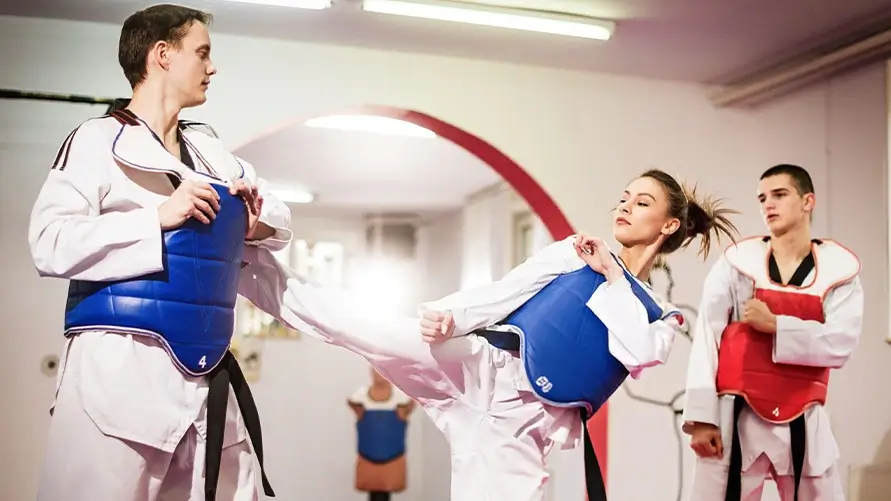When students step into your dojo, they should feel focus, energy, and respect. That energy doesn’t come by chance; it comes from smart design.
When designing a martial arts studio, don’t just think about hanging mirrors and laying mats. You need to create an experience that carries your discipline, reflects your culture, and fuels student motivation from the moment they come in.
Your martial arts studio design is a physical expression of your brand, values, and training philosophy. Every wall, mat, and light fixture shapes how students perceive discipline and how motivated they feel to train.
If you’re building a new school or revamping your space, these eight martial arts studio design principles will help you combine functionality, culture, and brand identity. And ultimately, you can turn your dojo into a space that drives growth and loyalty.
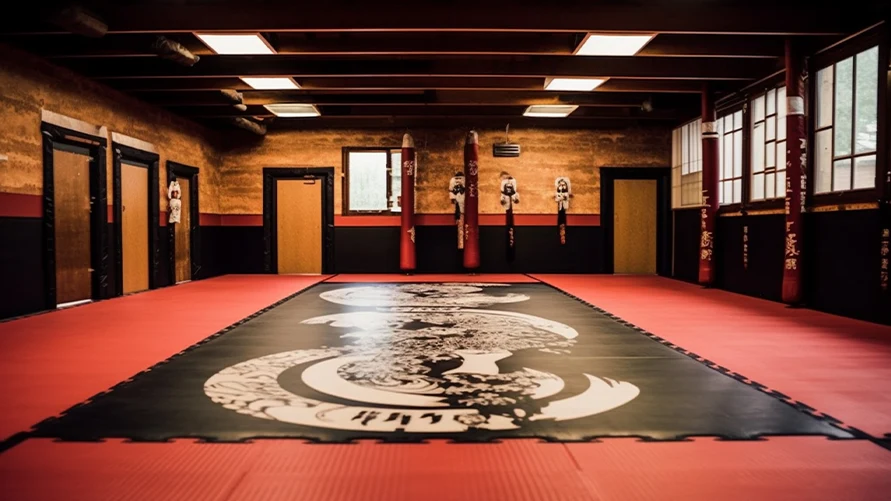
1. Let your discipline define the design
Every martial art has its own rhythm. A karate dojo values order and simplicity, a Muay Thai gym thrives on raw intensity, and a Brazilian Jiu-Jitsu academy fosters community and flow.
Your martial arts studio design should reflect these core traits. Use materials, wall art, and layouts that connect to your discipline’s personality. For example:
- A karate studio might feature minimal decor, pale tones, and straight lines.
- A BJJ studio might emphasize open mats, curved flow, and communal seating.
- An MMA space would use industrial textures and dynamic lighting for an energetic vibe.
When your design mirrors martial arts identity, you’re not just decorating a room; you’re communicating a purpose.
2. Choose colors that train the mind
Color is silent psychology. In martial arts, where focus and energy drive performance, your palette sets the emotional tone.
- Red and black represent power, aggression, and drive. It’s ideal for striking-focused disciplines.
- White and gray represent calmness, humility, and discipline, which are good for traditional styles.
- Earth tones can ground your space and encourage presence during training.
The goal is to create a color scheme that supports mental clarity. Balanced tones across walls, mats, and branding reinforce the emotional consistency of your martial arts studio design and strengthen your visual identity.
3. Focus on flow and functional layout
Good dojo layout design makes movement natural and safe. Students should move seamlessly between entry, training, rest, and locker areas without distraction or clutter.
Keep open sightlines for instructors to monitor students. Use storage spaces to hide gear between sessions. And never underestimate the impact of a well-placed mirror or barrier, which defines spatial rhythm.
A strategic martial arts studio layout improves focus and safety while creating a sense of flow that matches the discipline itself. When students can move fluidly, they train more effectively and stay longer.
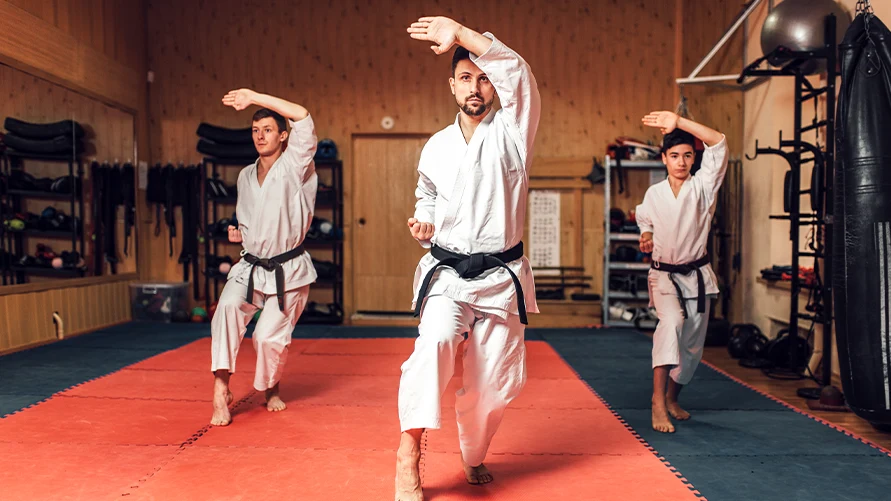
4. Balance tradition with modern design elements
A great martial arts studio interior respects tradition while embracing modernity. Traditional elements like tatami mats, calligraphy scrolls, and wooden weapons racks establish authenticity. Modern features such as LED lighting, digital displays, and glass viewing areas make your dojo feel current and professional.
This balance between old and new communicates credibility. It says you value heritage but understand today’s expectations. In design terms, that’s the sweet spot between respect and innovation, a mark of a dojo that evolves without losing its soul.
5. Light: The hidden instructor
Lighting can make or break your martial arts studio design. Natural light boosts focus and energy, while adjustable LEDs can shift the tone for different classes.
For sparring or competition training, go bright and even. For meditation or cool-down zones, keep it softer and warmer.
Avoid harsh fluorescent lights; they create tension and visual fatigue.
Lighting is one of the most overlooked design elements, yet it plays the same role as an instructor: guiding attention, mood, and movement.
6. Create a signature visual element
Every successful martial arts studio has one visual signature. It might be a branded wall, a master’s portrait, a dojo emblem, or an inspirational quote.
This focal point tells students what your studio stands for. It’s not just decoration; it’s identity. That visual anchor also serves as a branding tool. When people post photos from your studio, that signature backdrop becomes free marketing across digital platforms. Your design literally becomes your advertising.
7. Keep cleanliness at the core
Cleanliness is the ultimate reflection of discipline. No martial arts studio design works if the space feels messy or unhygienic.
Choose durable, easy-to-sanitize materials for mats and flooring. Incorporate concealed storage for uniforms, pads, and equipment. Schedule routine cleaning sessions, not just for hygiene but as part of dojo culture.
A clean dojo enhances student experience, prevents injuries, and reinforces respect for the space, all pillars of martial arts itself.
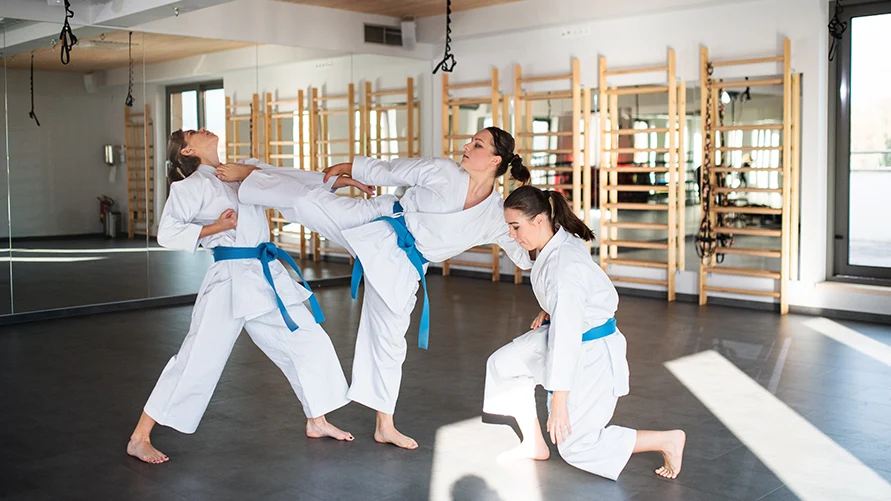
8. Build an experience beyond the mats
The best studios don’t stop at visual appeal; they extend their design into the entire student journey. From the reception desk to your online booking page, the branding should feel consistent.
Consider how your martial arts school design integrates with your martial arts studio management system. Does your signage match your website colors? Does your front desk look as professional as your social media?
That’s where technology ties everything together. With Wellyx martial arts management software, you can align your in-studio experience with your digital presence. From branded member check-ins to online class booking, Wellyx martial arts studio management software helps you maintain consistency between your physical and digital dojo.
Your design isn’t just visual; it’s operational.
Final thoughts
A great martial arts studio design doesn’t need a huge budget; it needs intention. Every decision, from flooring to lighting to color, should serve your brand, your discipline, and your students.
When your studio reflects who you are and how you teach, it becomes more than a training space; it becomes a physical story of your brand, one that your students remember, trust, and stay loyal to.
Design with identity. Build for flow. Maintain discipline. And let Wellyx help you tie your brand, management, and experience together seamlessly. Your dojo is not just a building, it’s the body of your martial arts brand.
